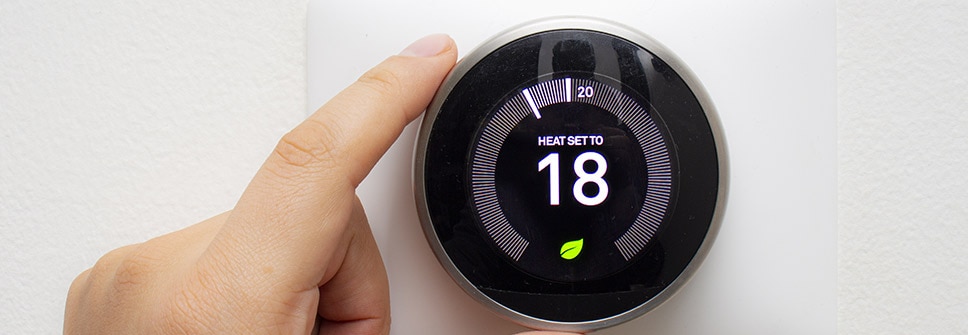It’s too hot. It’s too cold. Now it’s too hot again. Rarely can an entire household agree on the right home temperature, which can cause friction and discomfort.
The first step in solving this problem is getting the right thermostat. Obviously, if you have heating and cooling at home, you own a thermostat. But there’s a big difference between having a dial thermostat from 1995 and the latest smart thermostat from ecobee or Google.
A thermostat measures and maintains the desired temperature in a home. Many people ask what the difference is between a thermostat and thermometer. While a thermometer measures the temperature, it cannot do anything to change it. A thermostat is wired to your heating or cooling system and will tell it to either turn on or off to maintain the temperature you have set.
Thermostats work differently depending on the type. In general, there are two basic forms of operation:
There are other ways that thermostats work, but these are the main ones. It’s more important that you understand the three main types of thermostats: nonprogrammable, programmable, and smart.
These include the old mechanical kinds with the dial, as well as some modern digital ones. They cannot be programmed in advance, meaning you need to manually control them each time you want the temperature to change. For example, if you want the temperature warmer in the morning when you get out of bed, you must take that chilly walk to the thermostat to adjust the setpoint. Non-programmable thermostats are the least expensive, but they give you the least control and convenience.
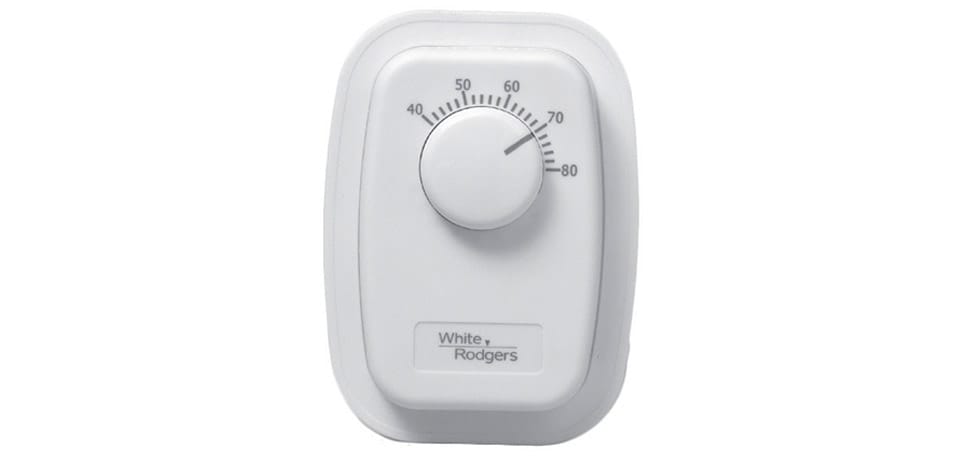
A programmable thermostat lets you schedule different temperatures at different times of the day or week, so you don’t need to do any manual setting. Depending on the model, you can program based on the following levels:
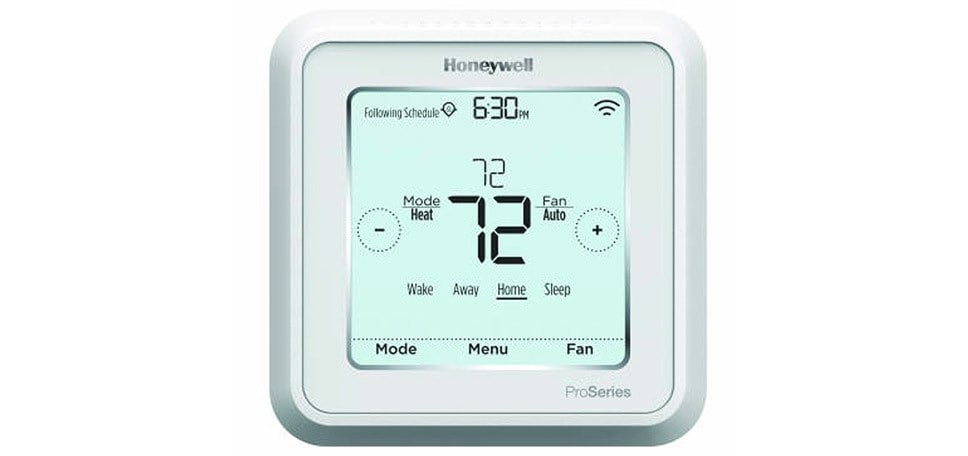
A smart thermostat “thinks” for itself and learns your temperature preferences over time, allowing it to maintain the temperature you desire without you having to set anything. It is the most modern thermostat option.
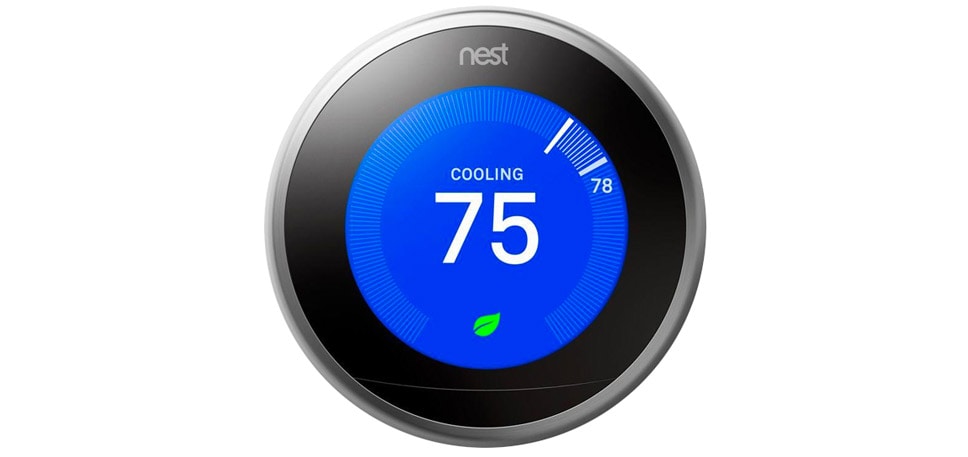
All smart thermostats are also programmable, so you can always set your own temperature schedule. However, the beauty of smart thermostats is their learning algorithm. The ecobee and Google Nest can even measure the temperature in different rooms and adjust depending on where you are. These are the most expensive types of thermostats, but once you make the switch, you’ll wonder how you ever lived without them.
You also need to consider the voltage of your thermostat. Most homeowners will need a low voltage thermostat, which runs on only 24 volts and works with most forced air furnaces and air conditioners. If you need to power an electric baseboard heater or other heating system that has a high electric demand, then you’ll need a line voltage thermostat, which is powered by a 120-volt or 240-volt circuit.
As we discuss below, thermostats have several wires that control different parts of the heating/cooling system. Depending on your system, you may need a specific thermostat. For example, heat pumps need a thermostat that can control their reversing valve, while multi-stage furnaces need a separate wire per stage. Consult your system owner’s manual or contact a professional contractor to find out what kind of thermostat you need.
Installing a thermostat is not that difficult. However, if you’re not sure what you’re doing or are dealing with a line voltage unit, we recommend hiring a professional contractor.

In most cases you will be replacing an existing thermostat. The most confusing part for most people is all the wiring. Each wire is a different color and connects to a difference terminal. Before disconnecting the wires on your old thermostat, you should label them with tags, so you know where they’ll go on the new one.
Let’s do a quick breakdown of common thermostat wires. Note that, depending on the thermostat, the wire names and colors may vary, so always consult your owner’s manual.
Red: The power wire, or R Wire, is the main source of power for the thermostat. It carries 24 volts from the system control board to the thermostat and provides power for the other wires. Some thermostats have two R wires, an Rh wire for heating and an Rc wire for cooling.
White: The heating wire, or W wire, signals heat to start. For multistage heating equipment, you may have multiple W wires, one for each stage, i.e. W1, W2, etc.
Yellow: The cooling wire, or Y wire, signals cooling to start. For multistage cooling equipment, you may have multiple Y wires, one for each stage, i.e. Y1, Y2, etc.
Blue: The common wire, or C wire, completes the circuit in your thermostat and is used to provide continuous power in smart thermostats.
Green: The fan wire, or G wire, signals the HVAC system fan to come on. This wiring is only needed in instances where you want to run the fan without any heating or cooling. For heating and cooling demand, the W and Y wires will automatically turn on the fan, respectively.
Orange: The reversing valve wire, or O/B wire, is only used with heat pumps to switch from heating to cooling mode. Some thermostats use separate O and B wires instead of combining them.
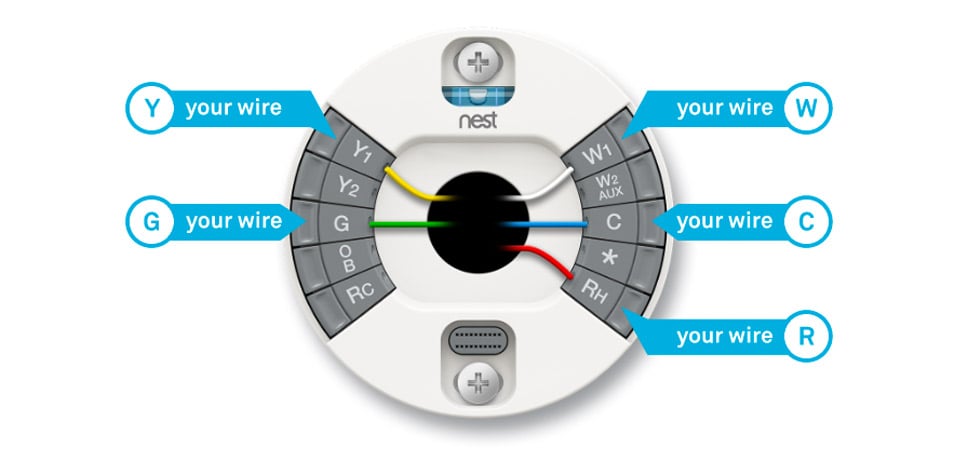
Other Thermostat Features
Originally, thermostats were designed to do two things: turn the heating or cooling one and turn it off. Today, smart thermostats can do things you could hardly have imagined 20 years ago. We already discussed the learning algorithm that always maintains your optimal comfort level. Besides this, here are some other 21st century smart thermostat bells and whistles.
In short, if you’re still turning a dial to set the temperature, you’re missing out.
The right thermostat is everything when it comes to your indoor comfort. It can mean the difference between sweating, shivering, and feeling just right.
You’re not in this alone. If you need help selecting the right thermostat, please contact us, and we’ll be happy to walk you through the process.
